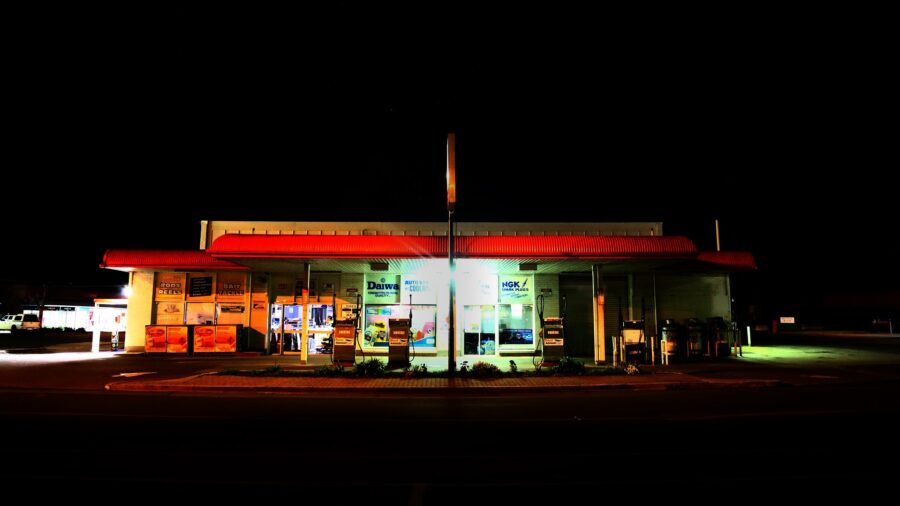Did you know most people visit their local servo about once a fortnight? What’s going to happen if 30% of new car sales by 2030 are electric vehicles? Some say many service stations will have to close. Others say it’s an opportunity to create new community hubs. It depends how convinced Australians are about driving EVs.
Your local servo
Australia has about 7,000 service stations that sell a whopping 90 million litres of petrol and diesel every year. Currently 20-30% of their revenue comes from selling fast food and grocery items.
- In NSW, there are 2,407 service stations selling 28 brands of fuel and 11 fuel types
- The average vehicle uses 10.8 litres every 100 kilometres or 1,404 litres if you travel the average 13,000 kilometres each year
- With a 50-litre tank, that’s about 28 visits to the service station.
What will happen if you no longer go to the servo once a fortnight? Boston Consulting (BCG) made some gloomy predictions in 2019 for the future of service stations in 2035:
- If EVs and shared mobility were 5-10% of transport, 25-30% of stations would close
- If EVs were 50% of cars, 45-60% would close.
As the Australian government aims for 30% of new vehicles to be electric by 2030, that suggests as many as 40% of service stations could close.
However, it’s not easy to predict the adoption of new technology. Fans of new technology often make predictions that are too optimistic while detractors (often investors) err on the pessimistic side.
What can servo owners do?
Owners of service stations, many of them independent, are in a difficult situation. They may not have the capital to invest in a brand new business model. Meanwhile, there’s little evidence at the moment that they need to change it.
Much also depends on the location of their servo. Many are sitting on valuable real estate so they can’t afford to fall behind with what they offer.
For example, the ones in dense city areas and busy regional highways could have a potentially large market for rapid public EV charging. Time-pressed motorists won’t spend 45 mins in the convenience part of their local servo for slow charging. With this in mind, Ampol is already installing over 400 EV fast chargers at 121 service stations around Australia.
Meanwhile, suburban servos will have to compete with home and supermarket charging. Australian trials show 80% of current EV charging is at home. However, not everyone’s homes are set up for this.
Will motorists still be stopping at service stations in 20 years’ time?
Servos as community hubs
According to a fuel conference in 2015, motorists will stop but their local servo will have to become a “community hub”. Community hubs would be one-stop shops for many household needs:
- EV fast-charging locations
- Hydrogen fuel retailers
- Local stores
- Cafes and restaurants
- Online delivery centres
- Small-scale utilities, with solar generation and battery storage
- Despatch centres for shared cars
- Co-working and meeting rooms.
In Norway, the world leader in adopting EVs, most cars in Norway are still petrol or diesel. Even so, service stations are shifting from being petrol stations to energy stations. A spokesperson says the number of pure petrol/diesel stations will fall quickly in the next decade as people update their cars.
The future of fuel
It is worth being cautious about the future of fuel. Peak body for the fuel industry, ACAPMA, says Australians need to be convinced any new technologies will actually improve their lives. For example, previous attempts to force adoption of EVs have not been successful. It suggests:
- In the next decade, most of the transition to EVs will be in light passenger vehicles
- Service stations will be able to diversify their businesses to include a mix of vehicle technologies in the medium term
- Most EV recharging will occur at home while service stations offer fast charging.
If EVs do make up 30% of new car sales by 2030, as the government plans, then 70% of new vehicles will still need traditional fuel. That means around 90% of all vehicles on the road will be filling up with petrol and diesel.
This is probably why many local servo owners think they will be selling fuel for a long time.


your opinion matters: